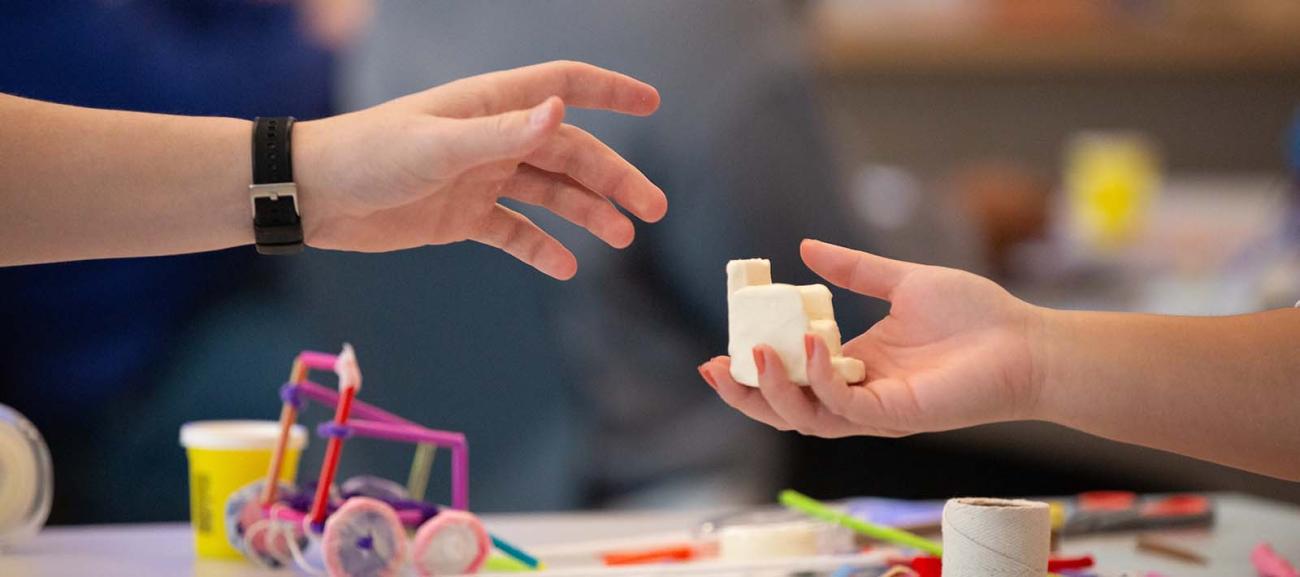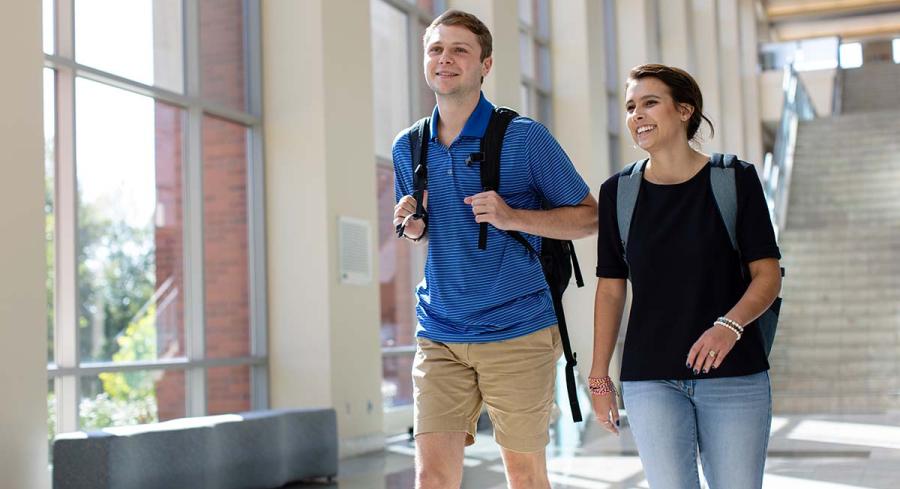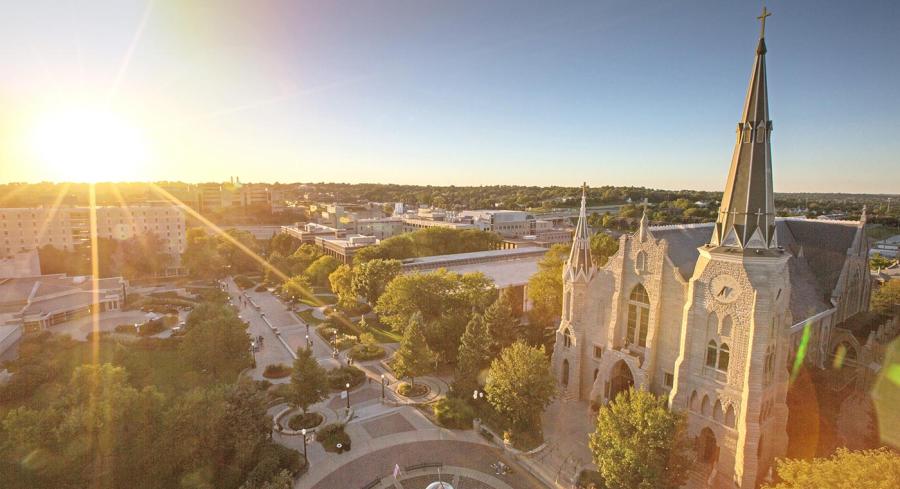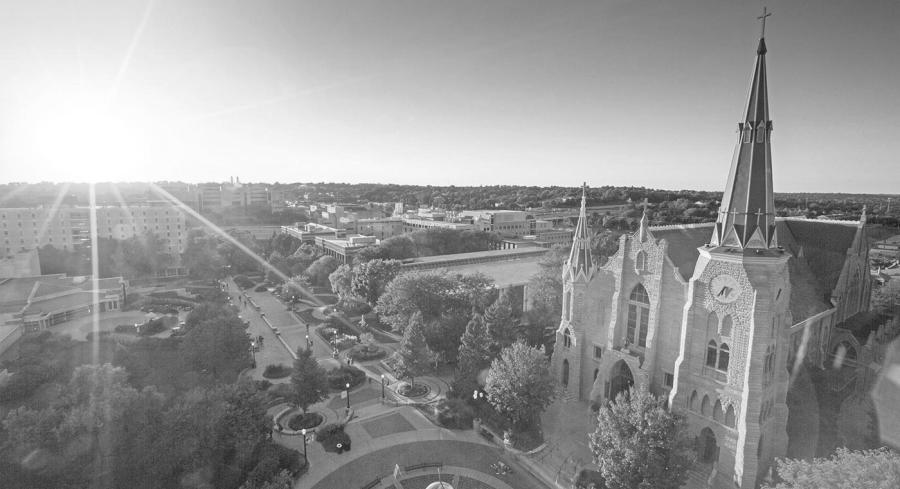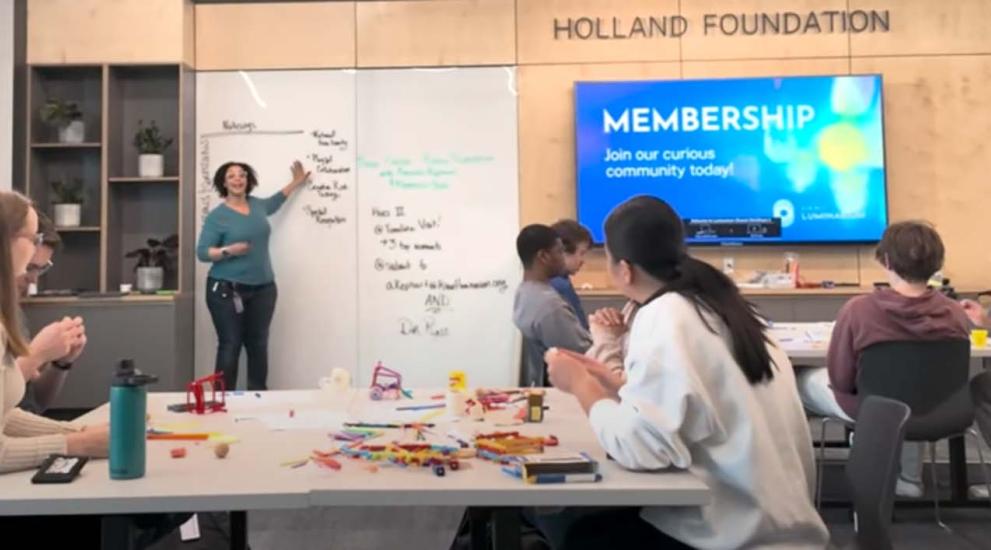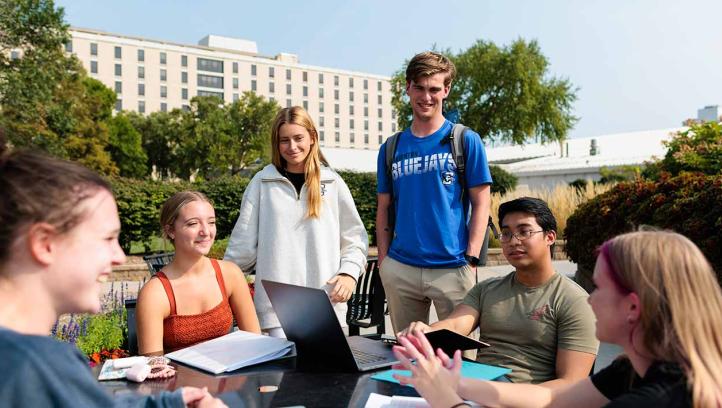
Bluejays research science and religion through museum exhibit design
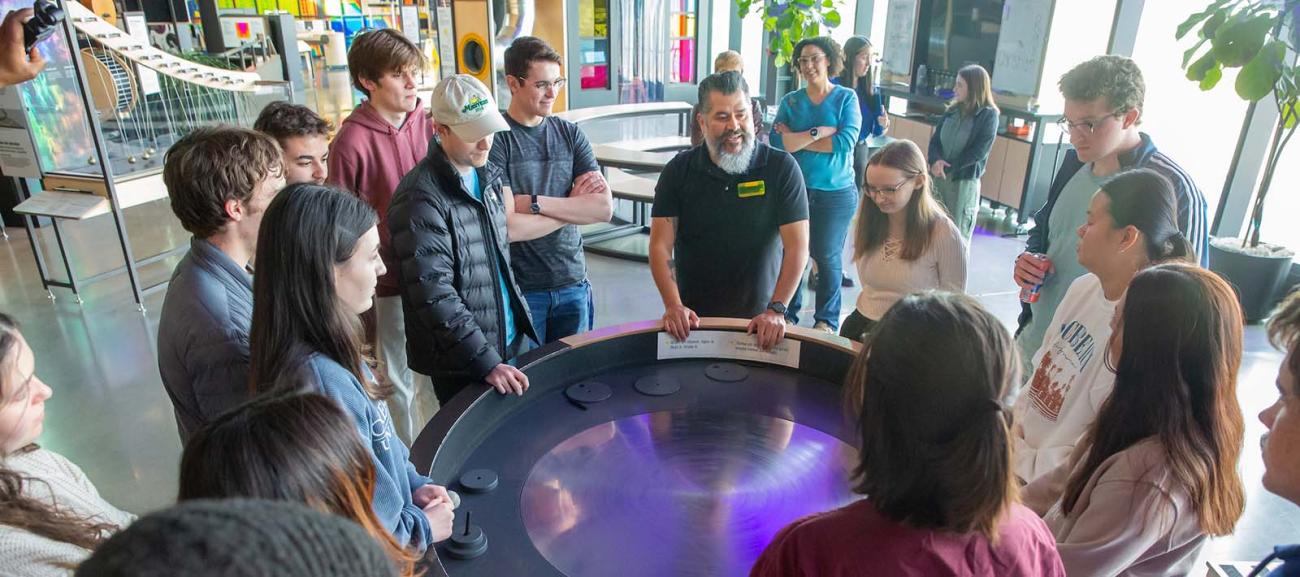
Where does a leisurely stroll and educational inquiry intersect? Museums.
In your relaxed steps around a museum, you take in intricate displays, scientific discoveries and aesthetic prototypes. This spring, a group of Creighton students learned just how much goes into creating these exhibits by developing a scientific exhibit displaying the intersection between science and religion.
Gintaras Duda, PhD, and Trish Ross, PhD, served as co-instructors for the honors level course Science Communication and Exhibit Design – Exploring Science and Religion in Collaboration with the Kiewit Luminarium.
Bluejays in the course worked directly with museum curators in the Omaha community to develop prototype exhibits and discover the role of museums in our society today. “In essence, they’ve gotten special access to institutions and people they couldn’t just ordinarily interact with,” shares Duda.
Brady Culp, neuroscience major and theology minor, points out that in this class, he feels more like a collaborator than a student.

“Museum design and prototyping are something I never thought I'd be interested in or have the opportunity to do, but I'm here and I love it,” he says.
Culp and his classmates have experienced the labor-intensive process of creating a museum exhibit through comprehensive research, prototyping and assessing user experience. “There are hundreds of questions that one needs to ask and answer before an exhibit can be displayed, and we’ve only really just peeked behind the curtain of what it’s like in class so far.”
This class pushes students' curiosity further through explorations on the intersection between science and religion, and how to communicate that science with others in an effective way.
“Many of us have this misconception that science and religion are at odds with each other or that they're in conflict; this is actually a really popular misconception, but if you look at the history it turns out that science and religion have worked hand in hand,” says Duda.

Many influential scientists, like Isaac Newton and George Lemaitre, were deeply religious. The former intertwined his scientific work with references to God, and the latter, a Belgian Catholic priest, pioneered the Big Bang theory. Duda and Ross provided students with background on the landscape of science and religion conversation so that they can continue to explore the field.
When Culp heard about this course, he jumped at the opportunity to enroll.
“I think religion and science are the two best ways to derive truth and understand the world around us, yet I cannot share in this understanding if I do not pursue it myself,” he says.
In Culp’s “relentless pursuit of truth”, he says, he explores these concepts daily as a Catholic student pursing a STEM degree.
As this course enters its final weeks, Duda shared his hopes that each student left the course understanding “the conflict thesis of science and religion is really a modern conception” and “has not held true for most of history.”
And as for Culp, he left the course with a with a newfound appreciation for the many faith traditions that have bettered our understanding of the world. “Science and religion are not in as much conflict as is perceived, and I, like many others, don’t believe that they are in conflict at all.”
